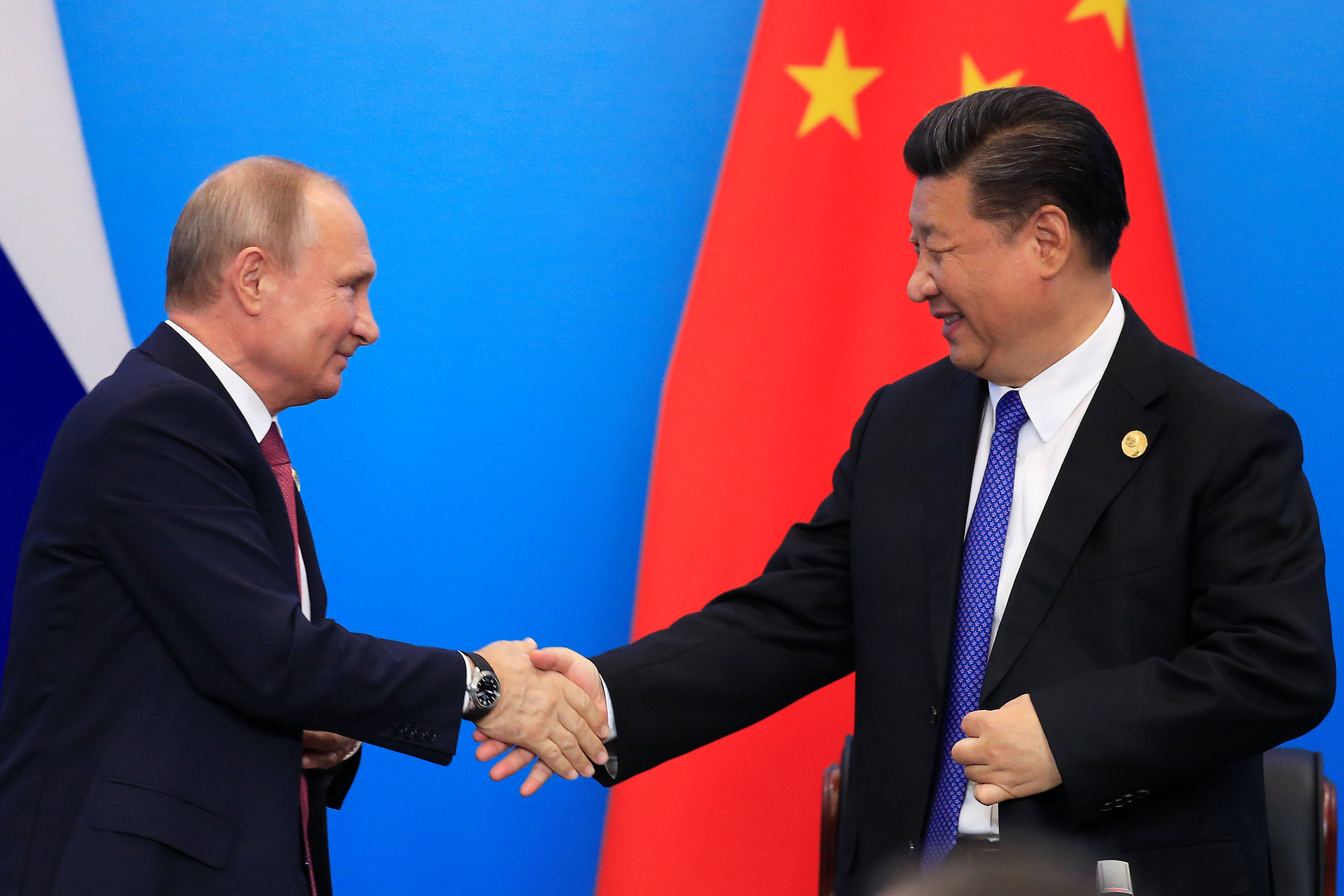Does a Russia-China alignment in the Arctic have staying power?
Russia and China have lots of common interests in the Arctic — but they have some diverging interests, too.

The combination of climate change, Russia’s laser-like focus on its core interests in its High North region, and China’s expanding investments in the Arctic suggests that the dynamics and assumptions that have historically defined the Arctic region are changing. As China seeks to broaden and deepen its oil, gas, shipping investments, along with its scientific inquiry, its largest and most compelling relationship on all counts in the Arctic is the Russian Federation.
For the United States and other Arctic coastal nations, the new Sino-Russian relationship in the Arctic might signal one crack in what they view as a potential break-up of the post-World-War-II order.
But how much common ground do Russia and China have in the Arctic — and where do their national interests in the region diverge?
The Russian Federation has, perhaps, more at stake in the Arctic than most of the other Arctic nations. Its sovereign territory encompasses more than one-half of the Arctic coastline, about 32 percent of its land mass, with a population of about 2 million people, some half of the total Arctic population of 4 million.
The Journal of Eurasian Studies reports that some 20 percent of Russia’s GDP — and growing — is derived from Russia’s Arctic region, mostly from energy extraction in a region often cited as having a substantial portion of the world’s undiscovered oil and gas resources.

Given the West’s sanctions on Russia, developing joint investment initiatives with China in the Arctic region became irresistible for Russia, particularly given the combination of an energy-based Russian economy and China’s growing need for energy resources.
China’s 2018 Arctic White Paper announced the scope of its Arctic ambitions by announcing its intention to create a “Polar Silk Route” thus adding an Arctic dimension to its massive and environmentally controversial Belt and Road Initiative, a move that was cemented in 2018 when Presidents Vladimir Putin and Xi Jinping vowed to pursue economic initiatives more closely. At the time, State Street Global Advisors reported Russia and China were considering 73 joint investments worth more than 100 billion dollars.
On its Arctic policy, China consistently says it will respect the sovereign rights of coastal states, adhere to international norms such as the United Nations Convention on the Law of the Sea to which it is a signatory, and, that it respects and would adhere to the diplomatic, and generally bilateral, processes by which overlapping claims to extended continental shelves are generally resolved.
However, taking a long view, Chinese officials note that as their nation expands its interests and influence in the Arctic region, China wants to have a greater role in developing new norms that are likely to emerge as the sea ice melts — particularly in the international waters as it relates to resource development and fishing in the currently ice covered Central Arctic Ocean.
It is the case that the national interests of the producing state, Russia, and the capitalized state, China, often coincide, and according to Carnegie Moscow, the relationship is “very unlikely to deteriorate in the foreseeable future.”
But the think-tank also noted that it is also quite unlikely that an unbreakable alliance is emerging. It is, however, perhaps, more likely that some form of strategic re-balancing will define the Arctic region moving forward, as Russia, China and the United States, with their separate ambitions and assumptions, jockey for power and dominance.
As Russia balances its renewed security concerns in an emerging and newly unprotected northern flank, financed by Chinese capital, the Kremlin is taking steps to protect its interests, aware of Belt and Road “debt traps” and the potential to be viewed a junior partner in the relationship.
But, with its impressive fleet of some 42 icebreakers and ice-capable ships, Russia’s most visible — and, perhaps, contentious — actions are found in its new rules to keep control over the growing commercial shipping — and, naval transits — while protecting the marine ecosystem in its coastal waters.
Russia has indicated that China will not be exempted from Russia’s new regulatory requirements, including requirements to hire Russian icebreaker escorts, to have a Russian pilot on board, and to give advance notice of Northern Sea Route transits. Nor will Chinese vessels be offered the tax or fee reductions available to Russian vessels. While China might chafe at such seeming restraints, given its long-term plans to build a fleet of ice-capable container ships and a nuclear powered icebreaker, Beijing is more willing to accommodate Russian requirements to protect its considerable access.
Whether China will play a dominant role in the new rules likely to be established as the sea-ice retreats in the Central Arctic Ocean, is not clear. China is an observer state to the region’s leading intergovernmental body, the Arctic Council, where soft-law rules and treaties are negotiated. But, beyond a mutual desire for an order that serves their interests, China’s vision of open Arctic waters that cross the North Pole, is likely to be curbed as Russia, Canada and Denmark resolve their competing and overlapping claims for an extended continental shelf that almost reaches the North Pole. This means that natural resources exploitation in the ice-covered seabed, outside of international waters, would go to the claimant coastal nations, rather than be available to China, a self-described “near Arctic” nation.
Further, debates over fishing rights — assuming fish become commercially abundant in the Arctic — and high seas commercial fishing fleets might find Russia and China in different corners on either management or quotas, or both.
Nor is the matter of the freedom of navigation along the Northern Sea Route a settled question. It would be the height of irony if, after realizing a positive rate of return on its port, infrastructure and energy investments along with its acquisition of Arctic technologies and know–how, an impatient China would ultimately agree with the U.S. on the characterization of Russian and Canadian coastal waters as international straits rather than internal waters.
In any case, one would think that the world’s largest Arctic nation and the world’s two largest economies would continue to find a way to operate peacefully together in the region known for its cooperative and collaborative approaches to problem solving.
Time will tell.
Anita Parlow was a recent Fulbright Scholar in Iceland and founding team lead for the Woodrow Wilson International Center for Scholars’ Program on the Polar Code.
The views expressed here are the writer’s and are not necessarily endorsed by ArcticToday, which welcomes a broad range of viewpoints. To submit a piece for consideration, email commentary (at) arctictoday.com.